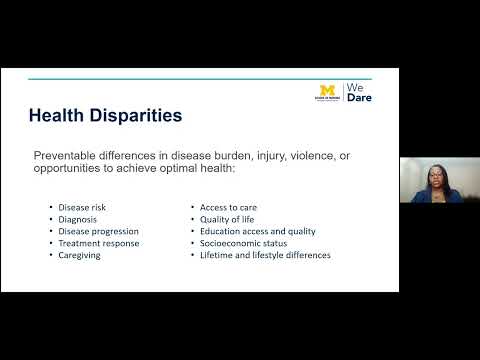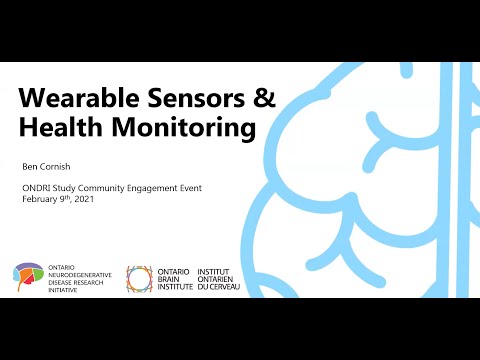Health Disparities in the Elderly Population
Contents [show]
This blog focuses on health disparities in the elderly population. The blog discusses how these disparities can be addressed and what needs to be done to improve the health of this population.
Checkout this video:
Introduction
Elderly people are often neglected in society. They are often not given the opportunity to age gracefully and with dignity. There are many health disparities that exist in the elderly population. These disparities can be due to a variety of factors, such as economic status, social status, race, and gender.
Some of the most common health disparities in the elderly population include:
-Higher rates of chronic diseases such as Heart Disease cancer, and diabetes
-Higher rates of mental health problems such as depression and anxiety
-Higher rates of disability and frailty
-Higher rates of hospitalization and nursing home admission
-Poorer access to healthcare services
-Poorer self-rated health
Defining health disparities
Health disparities refer to differences in the health status of different groups of people. In the United States health disparities typically refer to differences in health outcomes between racial and ethnic groups. However, health disparities can also refer to differences in health outcomes between different socioeconomic groups, or between men and women.
There are a variety of factors that can contribute to health disparities, including social determinants of health (such as poverty or lack of access to healthcare), biology and genetics (such as certain genetic conditions that are more common in certain racial and ethnic groups), and individual behaviors (such as smoking or not getting enough exercise).
Health disparities is a relatively new term; it was first used in the early 1990s. However, the concept of disparities in health outcomes is not new. For many years, researchers have documented differences in health outcomes between different groups of people. These differences may be the result of a variety of factors, including unequal access to healthcare, exposure to environmental toxins, or differences in social or economic status.
Causes of health disparities in the elderly population
There are many causes of health disparities in the elderly population. One cause is lack of access to healthcare. This can be due to a number of factors, such as poverty, location, and insurance status. Another cause is chronic disease. Many elderly people suffer from chronic diseases such as diabetes, heart disease, and cancer. These conditions can lead to a decline in health and an increased risk for other health problems Finally, health disparities can also be caused by poor lifestyle choices, such as smoking and not getting enough exercise.
The impact of health disparities in the elderly population
Health disparities refer to differences in the health of different groups of people. These differences may be due to a variety of factors, including Socioeconomic status, race or ethnicity, gender, geographic location, and/or sexual orientation.
Health disparities can have a significant impact on the health of the elderly population. For example, elderly people who live in poverty are more likely to experience a decline in their health status than those who do not live in poverty. Elderly people who are members of racial or ethnic minority groups are also more likely to experience health disparities than those who are not members of these groups. In addition, elderly women are more likely to experience health disparities than elderly men.
There are a number of ways to address health disparities in the elderly population. One way is to improve access to quality healthcare. Another way is to increase awareness of health disparities among healthcare providers and the general public. Finally, research is needed to identify the root causes of health disparities in the elderly population so that effective interventions can be developed to address them.
Strategies for reducing health disparities in the elderly population
There are a number of effective strategies for reducing health disparities in the elderly population. Some of these include:
-Improving access to quality healthcare: This can be done by ensuring that elderly people have access to affordable healthcare, as well as improving the quality of care that they receive.
-Educating the elderly population about health and wellness: This can be done through public education campaigns, as well as targeted outreach to vulnerable groups.
-increasing access to preventive care: This can be done by providing free or low-cost preventive care services, such as screenings and vaccinations.
-Improving social and economic conditions: This can be done by working to improve the overall wellbeing of the elderly population, through measures such as reducing poverty and improving housing and transportation options.
The role of the government in reducing health disparities in the elderly population
There is a growing body of evidence that suggests that the elderly population is disproportionately affected by health disparities. In response to this problem, the government has taken steps to reduce health disparities in this population through a variety of initiatives.
One such initiative is the Centers for Medicare and Medicaid Services’ (CMS) Elder Justice Roadmap, which provides a framework for addressing health disparities in the elderly population. The Roadmap outlines a number of strategies for reducing health disparities, including increasing access to quality healthcare, improving communication and coordination among providers, and increasing public education about health disparities.
In addition to the Elder Justice Roadmap, the government has also launched the Healthy People 2020 initiative, which includes a goal of reducing health disparities among all Americans, including the elderly population. Healthy People 2020 includes a variety of strategies for achieving this goal, such as increasing access to healthcare, improving healthcare quality, and promoting healthy lifestyles.
The government’s efforts to reduce health disparities in the elderly population are commendable and have the potential to make a positive impact on the lives of millions of Americans. However, it is important to note that these initiatives are still in their early stages, and it will take time to see significant progress. In the meantime, it is important for individuals to be aware of health disparities in order to make informed decisions about their own health and wellbeing.
The role of healthcare providers in reducing health disparities in the elderly population
Healthcare providers play a key role in reducing health disparities in the elderly population. By providing high-quality care and services that are tailored to the needs of older adults, healthcare providers can help to reduce the disparities in health outcomes that exist between different groups of elderly individuals.
There are a number of ways in which healthcare providers can reduce health disparities in the elderly population. One of the most important is by ensuring that all patients receive preventive care services that are appropriate for their age and health status. Older adults should be screened regularly for conditions such as cancer, heart disease, and stroke, and they should be vaccinated against influenza and other diseases that disproportionately affect older adults.
In addition, healthcare providers should ensure that older adults have access to necessary treatments and services. This includes making sure that older adults are able to see specialists when needed, that they have access to transportation to and from appointments, and that they can afford the medications and other treatments that they require. By ensuring that older adults have access to high-quality care, healthcare providers can help to reduce health disparities in this population.
The role of the community in reducing health disparities in the elderly population
There are many ways in which the community can reduce health disparities in the elderly population. One way is by providing access to care. This includes providing transportation to medical appointments, helping with medications and managing chronic conditions. Another way is by promoting healthy lifestyles and providing resources for healthy living. This can include education on healthy eating, physical activity and disease prevention. Community members can also provide social and emotional support to help elderly residents cope with stress and isolation.
The role of the individual in reducing health disparities in the elderly population
There is a growing body of evidence demonstrating that health disparities among older adults are associated with a number of factors, including access to care, income and education levels, and social determinants of health. However, the role of the individual in reducing health disparities in the elderly population is often overlooked.
Health disparities among older adults can be reduced by taking action to improve one’s own health and wellness. Older adults can make choices that will help them maintain their independence and improve their quality of life. They can also advocate for themselves and their community to ensure that they have access to the resources they need to stay healthy.
Older adults who are concerned about health disparities in their community can take steps to reduce these disparities by:
•Educating themselves about health disparities and their causes
•Encouraging others to get involved in efforts to reduce health disparities
•Supporting policies and programs that aim to reduce health disparities
•Advocating for improved access to healthcare for all older adults
Conclusion
In conclusion, elderly health disparities are a significant problem in the United States They are often caused by a lack of access to healthcare, poverty, and social isolation. These disparities can lead to poor health outcomes and early death.
Efforts to reduce elderly health disparities must address the underlying causes of these disparities. These efforts must also be tailored to meet the needs of specific communities. Only then will we be able to provide all older adults with the chance to age with dignity and good health.







